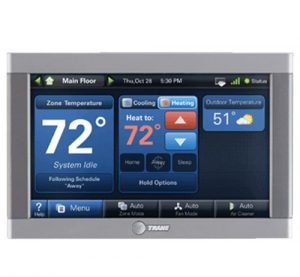We’re certainly approaching the warmest time of the year, so it’s often easy for homeowners to overlook steps to make their home more efficient. Especially in colder northern areas like our region, we often associate things like insulation and window upgrades with keeping cold air out and warm air in during the winter months. The truth is, taking steps to ensure your home is most efficient is just as important in the summer as it is in the winter. Plus, it’s often easier to make these improvements while it’s nice out to prepare for colder months rather than waiting and trying to do it in the freezing cold. One such step that can lead to a more efficient overall home is weather-stripping.
Believe it or not, weather-stripping is one of the best ways to save money on both heating and cooling energy bills. A huge amount of air can escape through improperly sealed doors and windows. By making sure these doors and windows are properly sealed, homeowners can stop the waste of a ton of valuable energy that can escape through small cracks or spaces. Weather-stripping is an often-overlooked project and not thought of as much as insulation or door and window replacement projects, but it can be just as important to maximizing your home’s efficiency. Not to mention, it can be a very cheap project if you know how to properly install weather-stripping yourself. If you are unsure of what to do, or need assistance with installation, we are happy to install weather-stripping for you.
When choosing material for your weather-stripping project, it’s important to pick a material that will withstand a great deal of friction, weather changes and general wear and tear—especially on doors. Vinyl and metals tend to be best for the job and will typically last the longest. Try to stay away from felt and open-cell foams for these projects. While they may be cheap, they are also fairly ineffective when it comes to blocking airflow they can quickly break down very quickly. It’s absolutely better to pay a little bit more up front for good materials that will last. The Department of Energy has a great guide for recommendations on different types of weather-stripping materials.
Once you have chosen your materials, it’s also important to use proper installation techniques on your doors and windows. It’s important not to rush through the process of installation. Taking your time will mean a job well done and will ensure you don’t have to correct any mistakes down the road. When installing weather-stripping, it’s important to make sure the temperature is above 20 degrees Fahrenheit (another good reason not to wait until the cold winter months). For doors, make sure the surfaces on which you’ll apply the weather-stripping are extremely clean. Apply the material to the entire door jamb using one continuous strip. Make sure the materials meet tightly at the corners to avoid any leaks. The weather-stripping should be compressed when the door is shut, but it should not be so thick that the door is hard to shut. The same installation steps should be taken for windows. It’s important to remember that weather-stripping shouldn’t interfere with the operation of the window, so make sure the materials you’re using are correct for the job.
By installing weather-stripping materials on your home’s doors and windows, you could be saving a great deal of money and energy—which always means a smaller monthly bill. Taking care of these energy saving upgrades in the warmer months will not only lead to more comfort in your home, it will also lead to more comfort while executing the job. For more home energy saving tips, ideas or general help, visit https://www.belred.com/ today!







